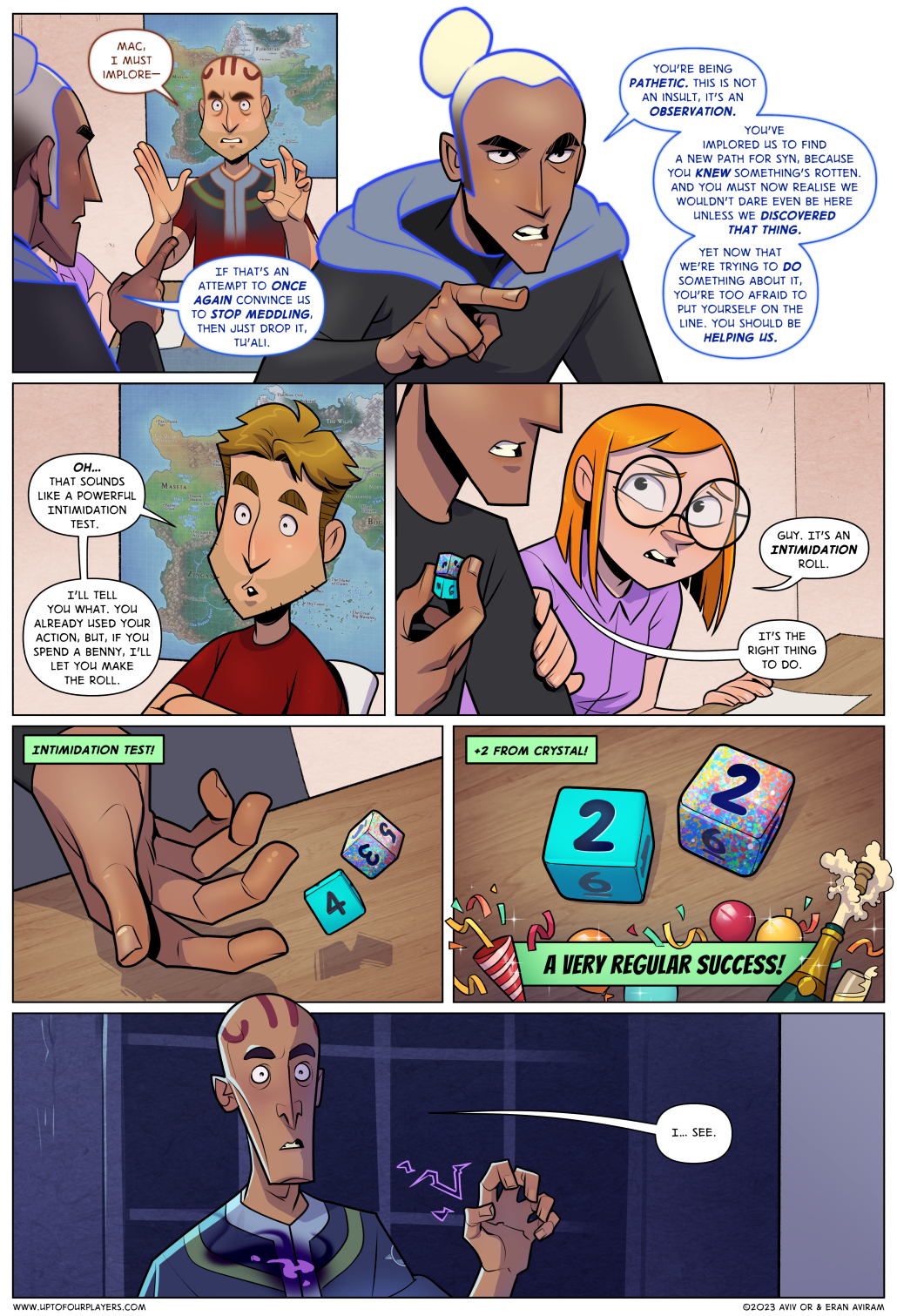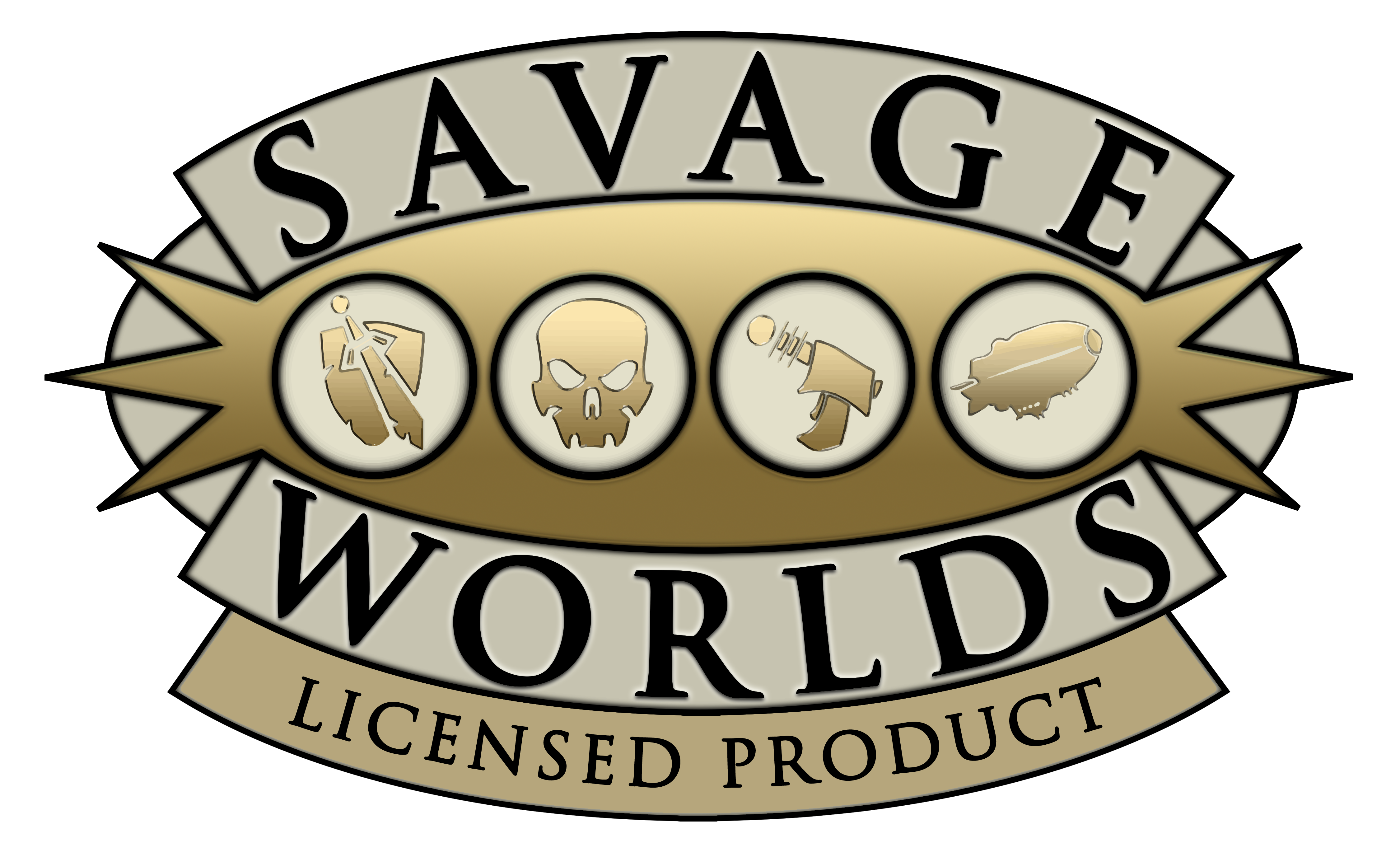This was a very good speech. So as a GM, what should you do? Your most powerful capability is to decide when and how to introduce the rules into a situation, but how do you decide?
Some GMs will say “that was a very good speech”, congratulate the player, and decide on Tu’ali’s response, because they believe the rules should not be brought up when we’re “roleplaying”. I have some issues with this approach, and also several other thoughts about how and when to implement the rules, but most of this was discussed in the past, mostly around chapters 1 and 2. Now I want to focus on something that wasn’t brought up before – tension.
Tension control is one of a storyteller’s main tools, and therefore it’s useful for most GMs (the more sandboxy-ones might not need it). You want to be able to guide it in some direction, either up or down, or to keep it at a specific level, usually either low or simmering. In roleplaying games this can be tricky, since our audience is active and therefore different people might have different levels of tensions at any one time, and to make things even more complicated, they’re all storytellers as well! But lets put these two points to the side for now.
So, tension. This is a crucial fight scene versus the nearly-ultimate bosses of the entire campaign. The tension started high, and Nadav wants to keep it high until the fight’s end; in effect, the breaking of the tension will be the end of the scene, whether you like it or not, so it really should coincide with the ending of the fight, both in the narrative and regarding the game rules.
Nadav is therefore always on the look out for opportunities to maintain tension. Not raise it further, just maintain; which actually means lots of small raises and releases, keeping at around the same level, because that’s how tension maintenance usually works best over long periods of time, like a ttrpg fight scene. The stakes should remain the same, but it should always feel risky, so once or twice every round, Nadav should make sure there’s something risky going on, with high stakes.
Enter dice rolls. It’s perhaps the simplest game tool a GM has – “roll for it”. Or in other words, make the result uncertain. Tension! But wait, Nadav also adds that it costs a Benny, because a free roll, that doesn’t cost anything, is not risky. There must be something at risk. What will Guy get if he succeeds? Unclear. Even Nadav is not sure, waiting to see the result, but he’s an experienced Savage Worlds GM so he has a bank of possible, Benny-worthy consequences. And Guy trusts him to make sure that this roll won’t just feel like it matters, but will actually matter, should he succeed.
BUT WE ALL KNOW HOW GUY ROLLS INTIMIDATION. And that’s the main reason we’re even having this discussion, and specifically why Nadav chose Intimidation (there’s a case to be made this is Persuasion, or even Taunt). The tension around a Benny-worthy roll is already pretty high; but one built around group folklore is even better, because it borders on mystical, and more importantly, keeps everyone engaged. They all feel they’re part of it.
And so, because Nadav’s decisions keep the atmosphere around the table high, even a very regular success with unclear consequences feels pretty incredible, releasing some of the tension, while keeping it generally high.
Players of Blades in the Dark might see here a Risky roll with Minimal Effect (perhaps ticking some new clock; “Converting Tu’ali to our cause”?). The Blades resolution system doesn’t work for every play style, but it should be studied by every GM, because there’s a lot to learn there. Oh, and in PbtA as well, of course. A single shout in Queerz! (which I’m just about done editing now) can either be a Slay, a Strike a Pose, or a Talk it Out move, which vaguely translate to attack, buff or persuasion, depending on the narrative positioning of the shouting character. It’s good stuff. Good system, I’m proud of my work there.




